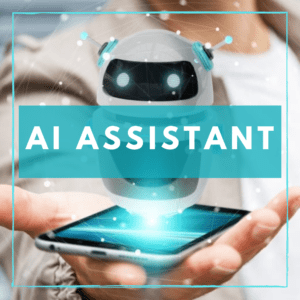 The following is a guest article by Jason Warrelmann, Vice President, Global Services & Process Industries at UiPath
The following is a guest article by Jason Warrelmann, Vice President, Global Services & Process Industries at UiPath
From battling COVID-19 surges to an increase in respiratory syncytial virus (RSV), and this year’s cold and flu season, physicians and their staffs continue to navigate one of the busiest times of the year. This, coupled with national healthcare worker shortages, means that healthcare workers are feeling heightened patient volumes and stress levels.
According to a recent report from the Centers for Disease Control and Prevention (CDC) and Vital Signs, nearly half (45.6%) of all healthcare workers surveyed said they often suffered from burnout. So, what can be done to give physicians the support they need and deserve?
Many healthcare organizations use AI-powered automation to support their employees, increase positive patient outcomes, and decrease administrative workloads. By combining automation with Generative AI, AI-powered automation gives employees the agility to complete time-consuming manual tasks in a fraction of the time. By deploying this technology, organizations can free healthcare workers from the activities that cause them the most stress, allowing them to devote more time to patients and take moments back for themselves.
Here are three significant ways in which AI-powered automation can assist healthcare workers in their jobs and decrease burnout, all while improving patient care.
Decreasing Repetitive Tasks
When treating patients, physicians and staff require enormous amounts of paperwork and administrative tasks associated with care. From updating patient records, scheduling follow-up appointments, or completing insurance paperwork, administrative work can feel all-consuming. According to one report, 33% of physicians spend two or more hours completing documentation outside work hours daily, and 58% of those physicians believe that this is not an appropriate use of time. Although these tasks are part of the daily routine for many healthcare workers, they force them to lose time working directly with patients and accelerate feelings of burnout.
Automation can help healthcare organizations eliminate the amount of administrative work that needs to be completed every day. Many medical professionals’ routine responsibilities are perfect tasks for AI-powered automation to handle on their behalf, such as data entry, scheduling appointments, updating and transferring records, and saving files.
Using AI-powered automation, employees can even create customized automations for the specific tasks they find to be the most repetitive and time-consuming. For example, Central and North West London (CNWL) NHS Foundation Trust deployed AI-powered automation to support its back office functions that kept nurses bogged down with manual paperwork as well as supporting clinical settings. With automation, the Trust now saves more than 56 hours of manual work per day, giving employees more time to focus on vital patient care.
Redeploying Resources
Instead of tapping understaffed and overworked clinicians or looking to hire additional workers amidst a shortage of healthcare talent, automation can augment workforces and empower existing staff. Data from Accenture estimates that 70% of healthcare workers’ tasks could be reinvented by technology augmentation like AI and automation, helping more organizations combat the challenges the industry faces today.
Additionally, the more time and money an organization can save, the more they can use those resources to provide the best quality treatment for their patients. With AI-powered automation, workflows and operations within healthcare facilities can be optimized. Predictive analytics can help manage inventory efficiently, ensuring that medications and supplies are stocked appropriately and preventing waste and unnecessary spending. The technology can also continuously learn from new data and experiences, improving its accuracy and efficiency over time. This continuous discovery can lead to more effective and cost-saving processes that can be deployed across the organization.
Improving the Patient Experience
While doctors, nurses, and staff believe in putting their patients first, in practice, it can be challenging to deliver top-notch care when so many tasks still require manual effort. Healthcare organizations can use AI-powered automation to improve the entire patient journey – addressing patient needs even before a patient enters the office.
Onboarding a patient requires time for insurance verification, referrals, and appointment scheduling, as well as many phone calls to the office from the patient and their insurance provider. These necessary steps can be accelerated by implementing AI-powered automation to ensure a more efficient and accurate process. AI-powered automation can be deployed as chatbots, answering patients’ questions about their bills, office hours, and appointments, among other inquiries, that office staff may not have time for.
AI-powered automation offers an unprecedented opportunity to reshape the practice of healthcare. Implementing automation helps healthcare organizations lower the cost of care, become more proficient in data-driven decision-making, gain a holistic view of processes through continuous discovery, and empower workforces. Healthcare organizations – no matter their size or specialty – should explore how AI-powered automation can help them deliver improved experiences for their workforces and their patients.
Get Fresh Healthcare & IT Stories Delivered Daily
Join thousands of your healthcare & HealthIT peers who subscribe to our daily newsletter.




